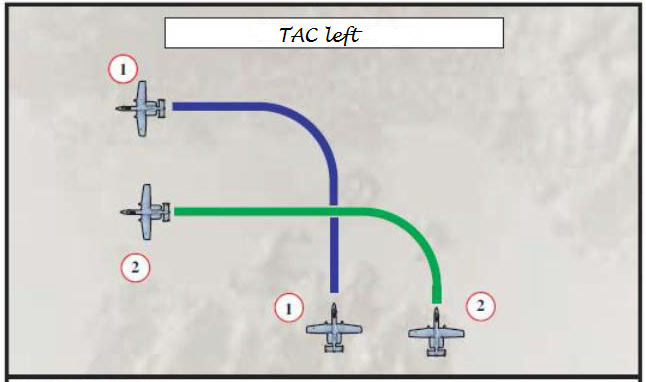Y'all have a lot more experience than me, but one thing I thought might be helpful to add to this thread, based on the wingman clinics I've done with quite a few squad wing-pairs, is
maintaining a combat spread (500-800 yards apart, line abreast) after making a 90-degree tac (or "crossing") turn.What often happens is a lead calls a turn and immediately makes a turn away from his wingman. The wingman then follows, but this results in them now being in trail, instead of maintaining combat spread.
The basics of a tac turn are simple and make it easy to maintain formation:1) The lead calls the tac turn (left or right)
2) The
outside element turns first (if turning left, the element on the right is "outside", if turning right the element on the left if "outside").
3) The
inside element waits (stays on current heading) until the outside element is
nose on and
then begins the turn. In other words, as inside element you wait to turn until your wingman is pointing at you (at roughly at your 5 o'clock or 7 o'clock position depending on the direction of turn), and
before they reach your 6 o'clock position.
4) The lead and wing
elements will have swapped (crossed) to opposite sides of the formation but will have maintained the same combat spread.
See the pics below:


One key here is for the both elements to turn at roughly the same rate (bank-angle and G). Learning to make standard rate turns together is something to practice.
I think this is also good for the wingman to lose the habit of trying to follow the lead around through turns, and instead learn to trust that proper timing and execution of maneuvers will keep you in positions of mutual support.
Hope this post is helpful too.
<S>
Kingpin